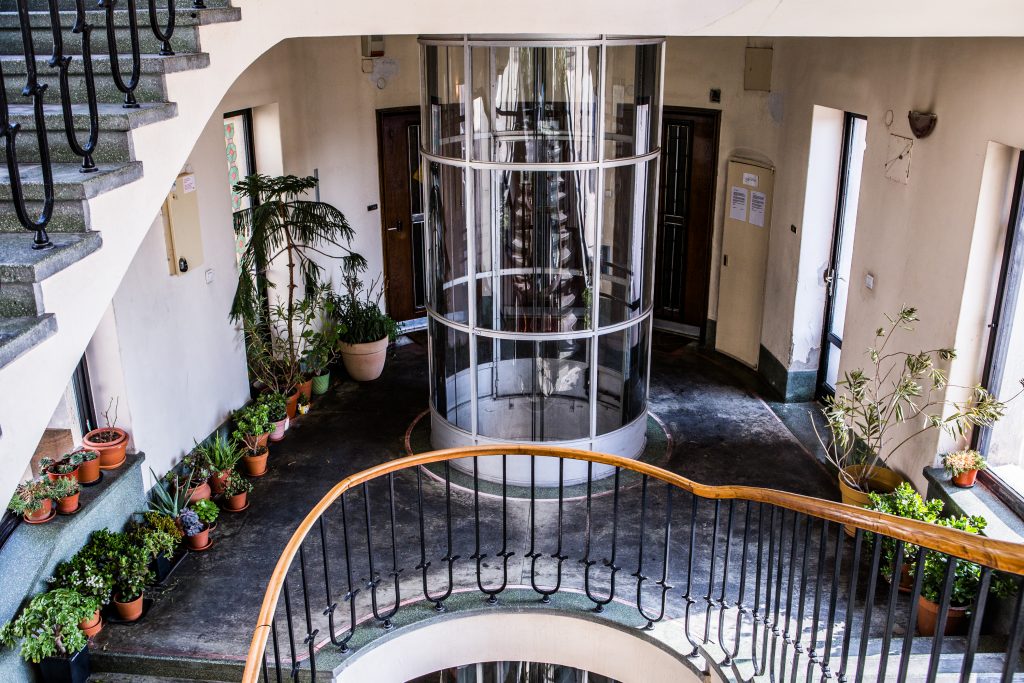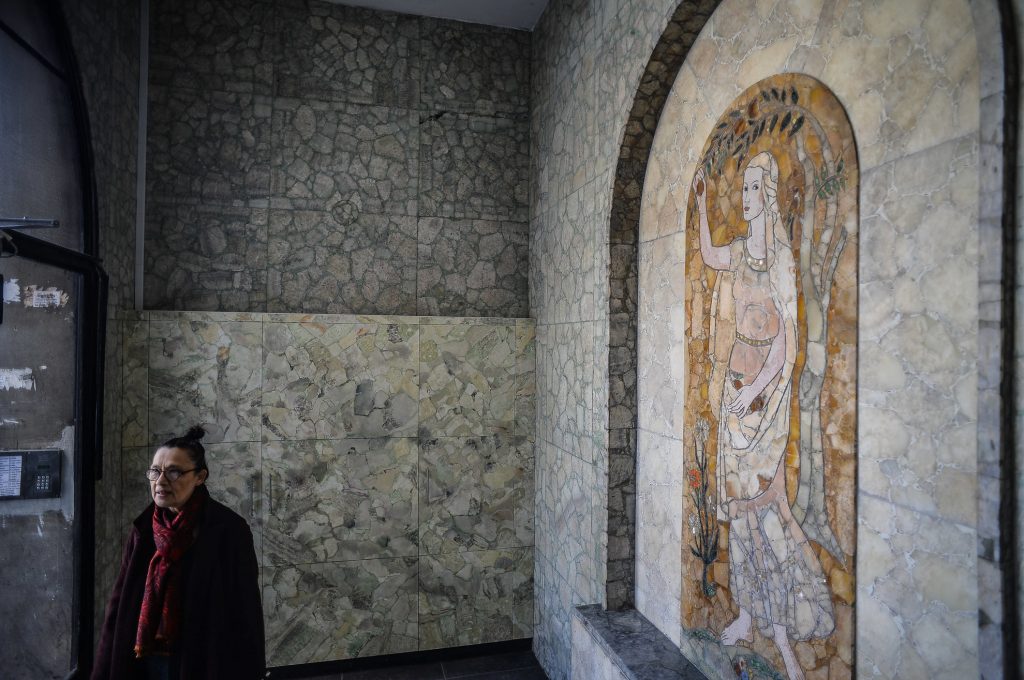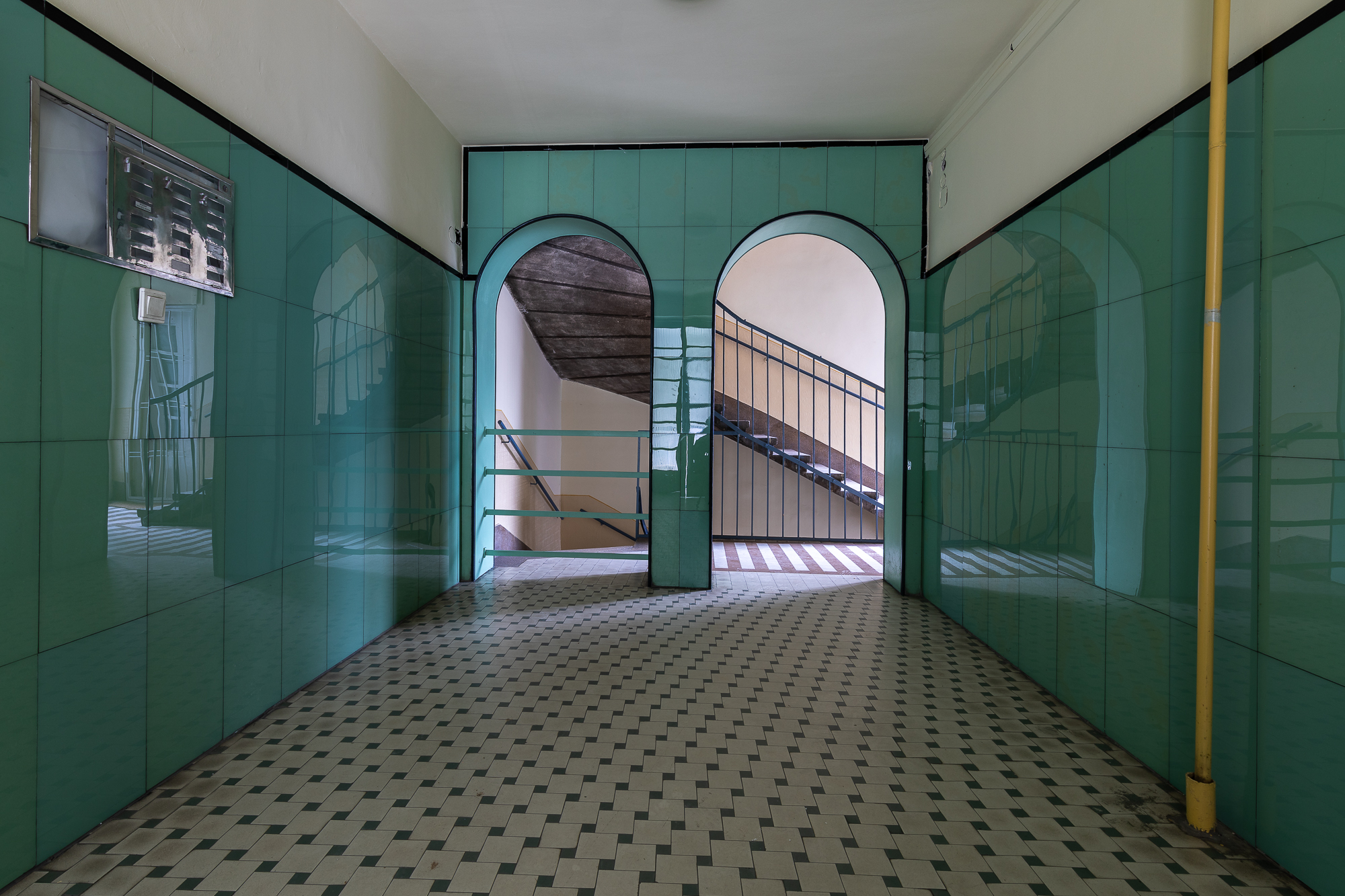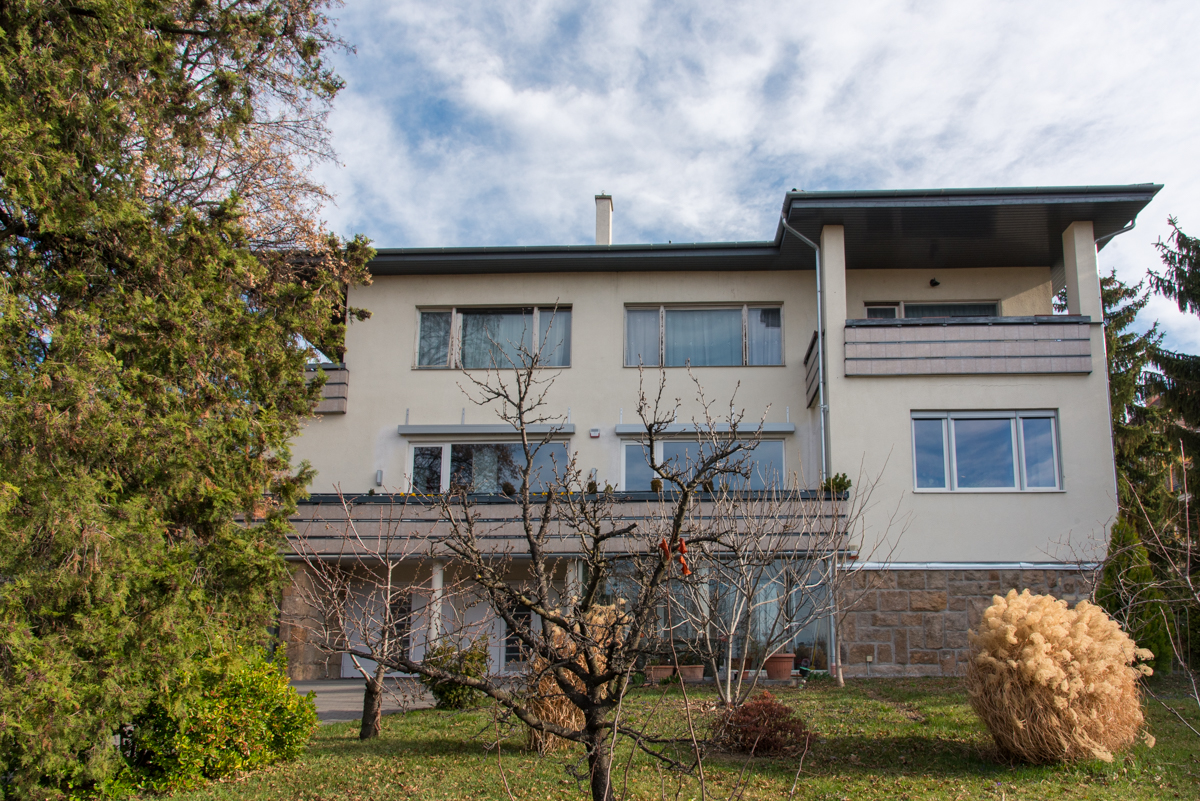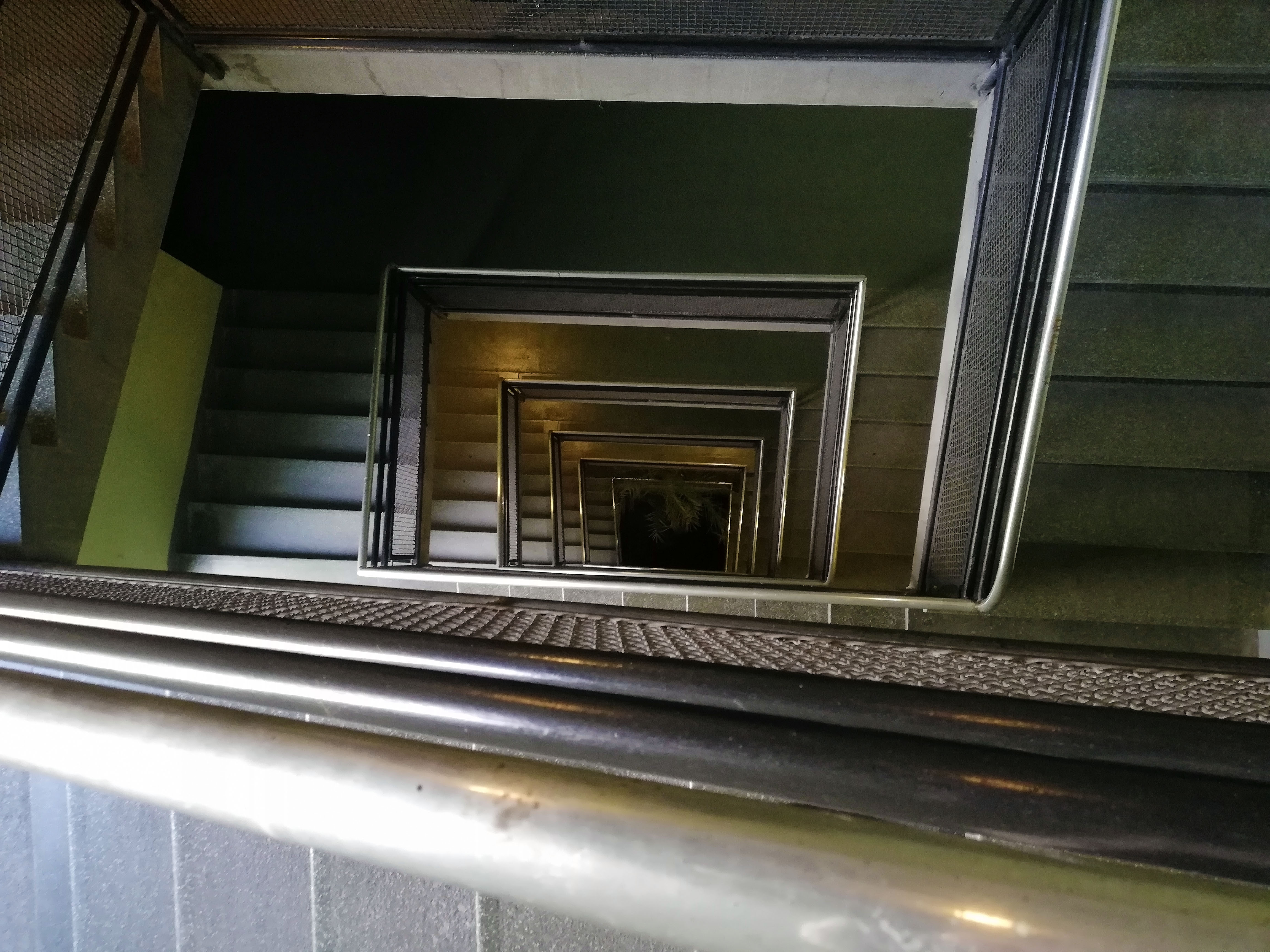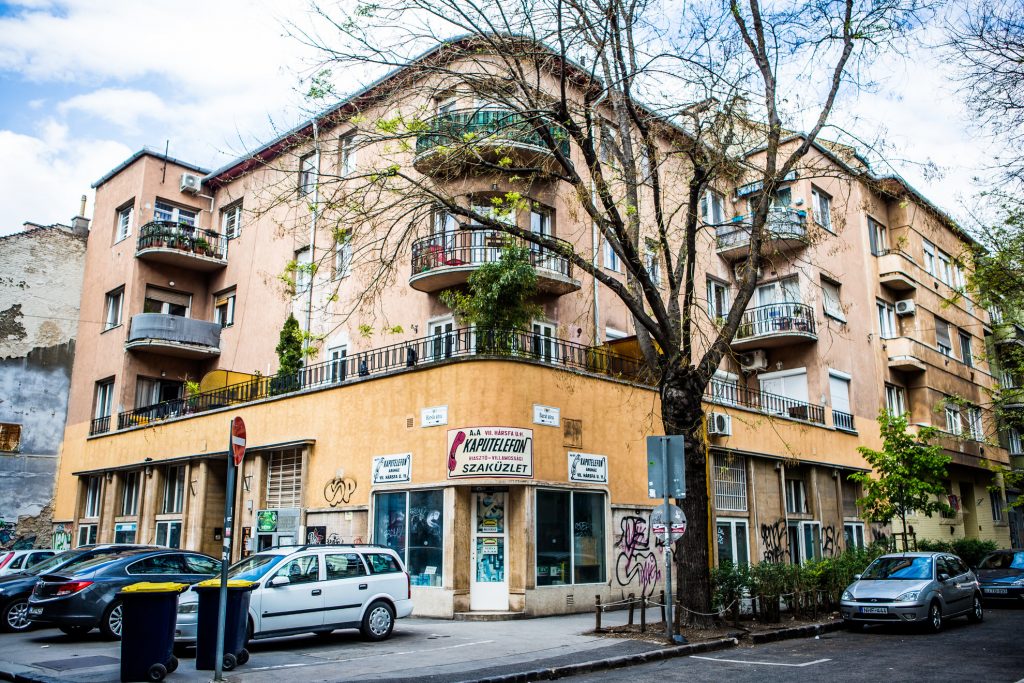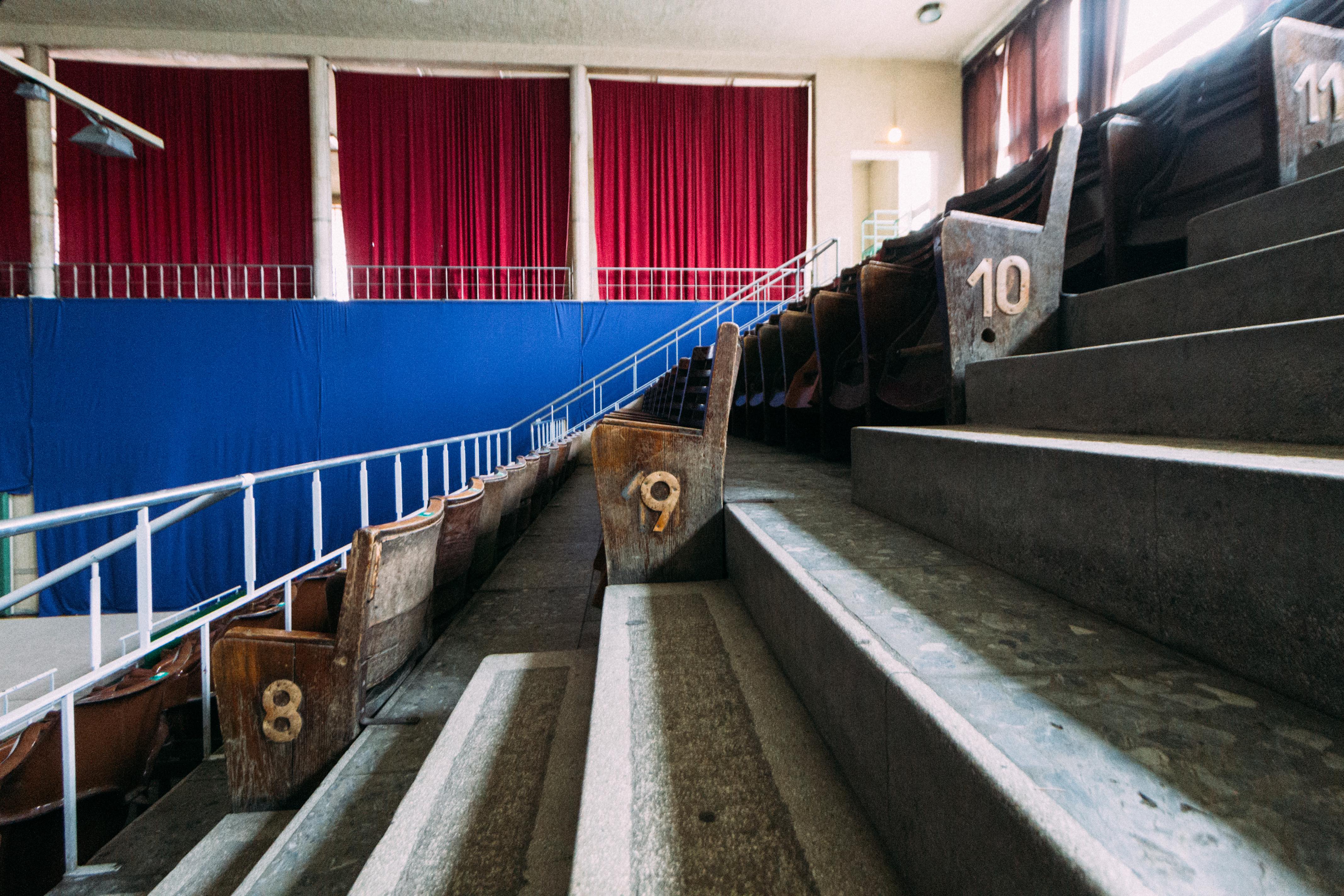1/11
Margit körút 15-17/Dugattyús ház
Dugattyús ház (‘Piston House’), known for its iconic glass lift, was built at the end of the 1930s by Béla Hofstätter and Ferenc Domány, the architectural team also responsible for the famed Dunapark house just over the river. Originally created as a residential home for the Manfred Weiss Factory Pension Fund at the bottom of exclusive Rózsadomb, it was equipped with all the modern luxuries of the day. The glass lift by the staircase only serves to illustrate the spirit of advanced philosophy behind the building’s construction.
For Budapest100, an exhibition here covers the life and work of designers Hofstätter and Domány, and the history of the building. Visitors can also admire the laundry room, a protected industrial heritage landmark.
Open: Sat-Sun 10am-4pm
2/11
Pozsonyi út 38-42/Dunapark házak
The Dunapark Houses of Pozsonyi út in Újlipótváros not only hide their iconic blue staircases, but are also significant in terms of their modern architecture and their revolutionary conversion to a residential block thanks to the afore-mentioned Béla Hofstätter and Ferenc Domány. Not all of the luxurious decorative detail is original, such as the blue covering in the corridors and built-in wardrobes in each apartment.
As well as a guided visit, there will be an exhibition in the entrance about the history of the building, and a few archive photographs on display in the adjoining Dunapark café/restaurant of similar heritage.
Open: Sat-Sun 11am-4pm
3/11
Belgrád rakpart 2
Two years ago, when the houses on the Danube embankment were opened for Budapest 100, this former residence of literary critic György Lukács was one of the most photographed venues thanks to its beautiful oval staircase.
This weekend there will be concerts here, while photos and documentation provided by residents echo their famous past counterparts, the house and its architects.
Open: Sat-Sun 1pm-4pm
4/11
Bartók Béla út 62-64/Simplon-ház
Gyula Gyárfás first opened a cinema here in 1910 then, flush with success, set about this huge construction 25 years later. This six-storey modern building, designed by Gábor Preisich and Mihály Vadász, was built in 1934, both the residency of the Manfred Weiss Company Pension Fund and the first apartment block to have a cinema in the basement, Gyárfás’ legendary Simplon.
This weekend, events include an exhibition of the history of the house and local cinema, screenings and talks with current residents.
Open: Sat-Sun 10am-6pm
5/11
Csalogány utca 26
In 1942, Bertalan Árkay designed a block of flats, influenced by the Italian Novecento movement, on display this year in Víziváros. The cinnabar red of the original tiling still vibrates brightly while the unique geometrical flooring around the staircase and entrance is complemented by a mosaic entitled Almát szedő nő, making this an unmissable attraction.
Here, media artist Pál Rebek takes a number of family-friendly workshops themed around the mosaic, its colours and Mother’s Day.
Open: Sat-Sun 2pm-6pm
6/11
Kék Golyó utca 4
The stunning entrance in green Vitrax glass is the ornamental feature of this apartment building opened in 1935. As part of the Budapest100 exhibition here, you can get to know the history of the neighbourhood and enjoy performances of a few light pieces by the Budafok Mozart Youth Orchestra.
Open: Sun 2pm-6pm
7/11
Ménesi út 75
Designed in a somewhat romantic, modern style by Jenő Lechner Jr, this was constructed in 1941-42. Destroyed during the war, it was rebuilt according to the original plans in 1948, with slight changes to the interior.
As part of Budapest100, there will be a discussion in Hungarian here with architectural historian András Ferkai.
Open: Sat-Sun 1pm-5.30pm
8/11
Szép utca 3
Hidden within the city centre is the beautiful example of modern architecture on Szép utca, commissioned in 1937 by the Hungarian Equine Society, which had moved its headquarters from Semmelweis utca 17. Architects László Lauber and István Nyiri also created the Horticultural University building on Ménesi út, another participatory venue within the framework of Budapest100.
Short tours of the house run from the cellar to the roof, with a few surprises in store.
Open: Sat 1pm-6pm, Sun 9am-1pm
9/11
Barát utca
This shaded street between Hársfa and Szövetség utca can be traversed in a few minutes, but it’s worth taking your time when strolling down Barát utca. Though quite narrow, its trees in need of a little TLC, this unified, modern thoroughfare echoes stylish Újlipótváros elsewhere in Pest, but here forms part of the eclectic residential architecture of District VII.
As part of Budapest100, as well as outdoor activities such as guided walk with historian and Bauhaus expert Károly Nagy, but houses such as 1, 3, 4, 8, 11 and 12 will be laying on special events, including live music.
Open: times vary
10/11
Istvánmezei út 1-3/Aladár Gerevich National Sports Arena
The building was opened in 1941 as Hungary's first indoor sports hall. A visit here as part of Budapest100 allows you to travel back in time as much of the building has kept its original detail and atmosphere – although registration is required.
11/11
+1 Goethe Institute & Budapest100
This year, for the first time, the Goethe Institute and Budapest100 will be presenting joint events, all part of the Bauhaus 100 celebrations.
Documentary films will be screened and lectures staged at the Contemporary Architectural Centre. Find details here.
A complete guide to Budapest100 events can be found here
You can also find printed schedules for Budapest100 at the KÉK office (District XI, Bartók Béla út 10-12), OSA (District V. Arany János utca 32), Tourinform (District V. Sütő utca 2) and FUGA (District V. Petőfi Sándor utca 5).

